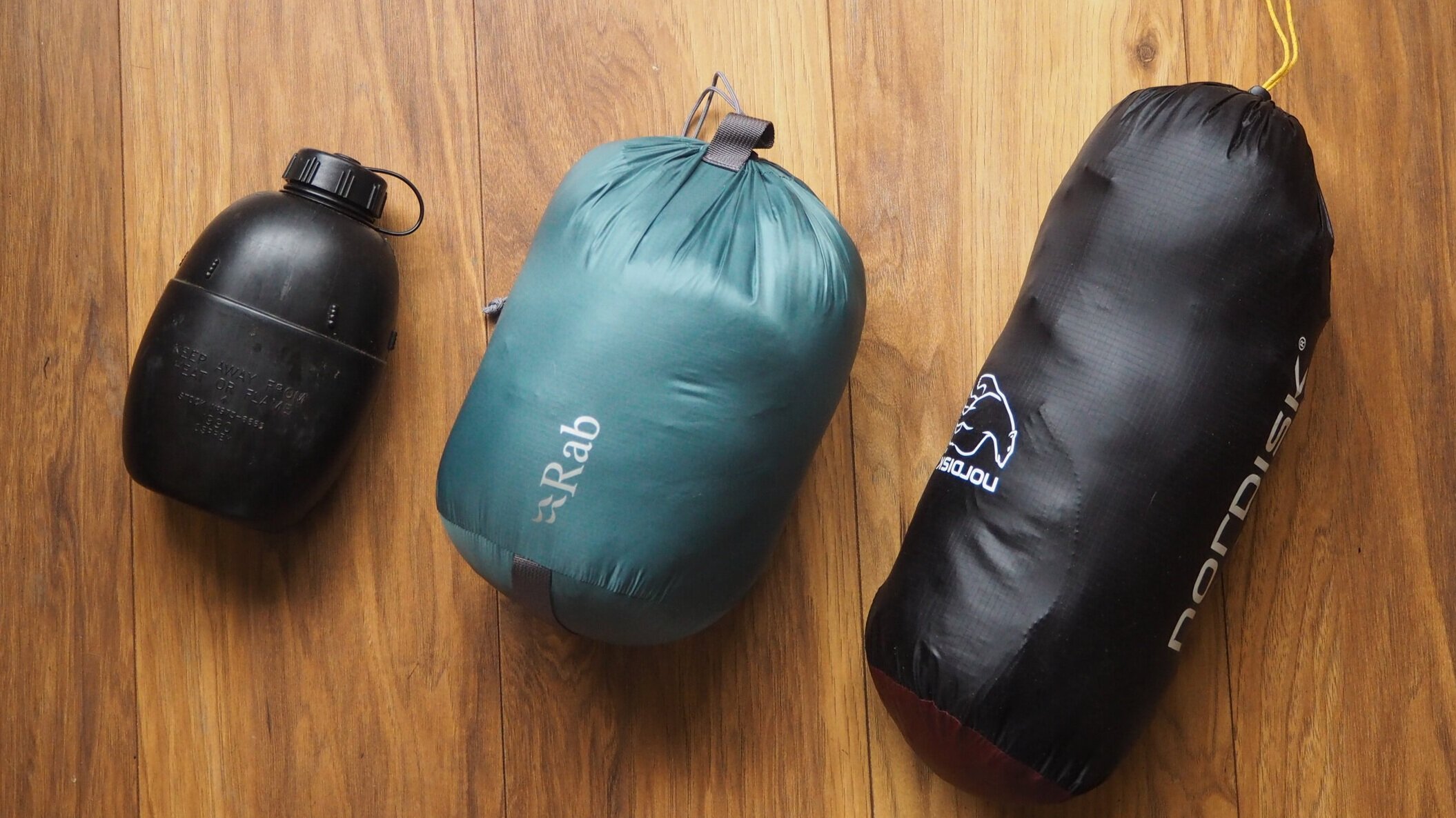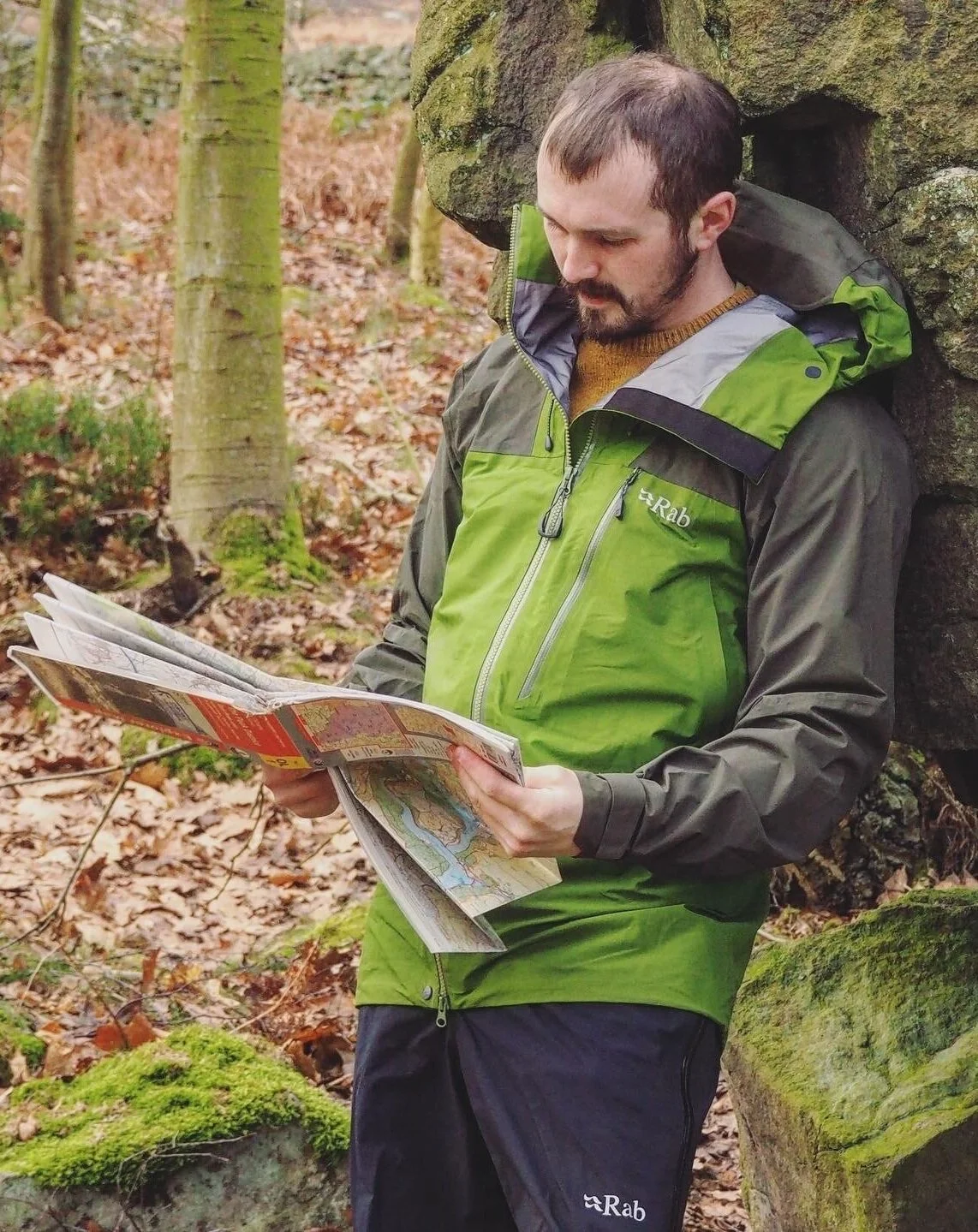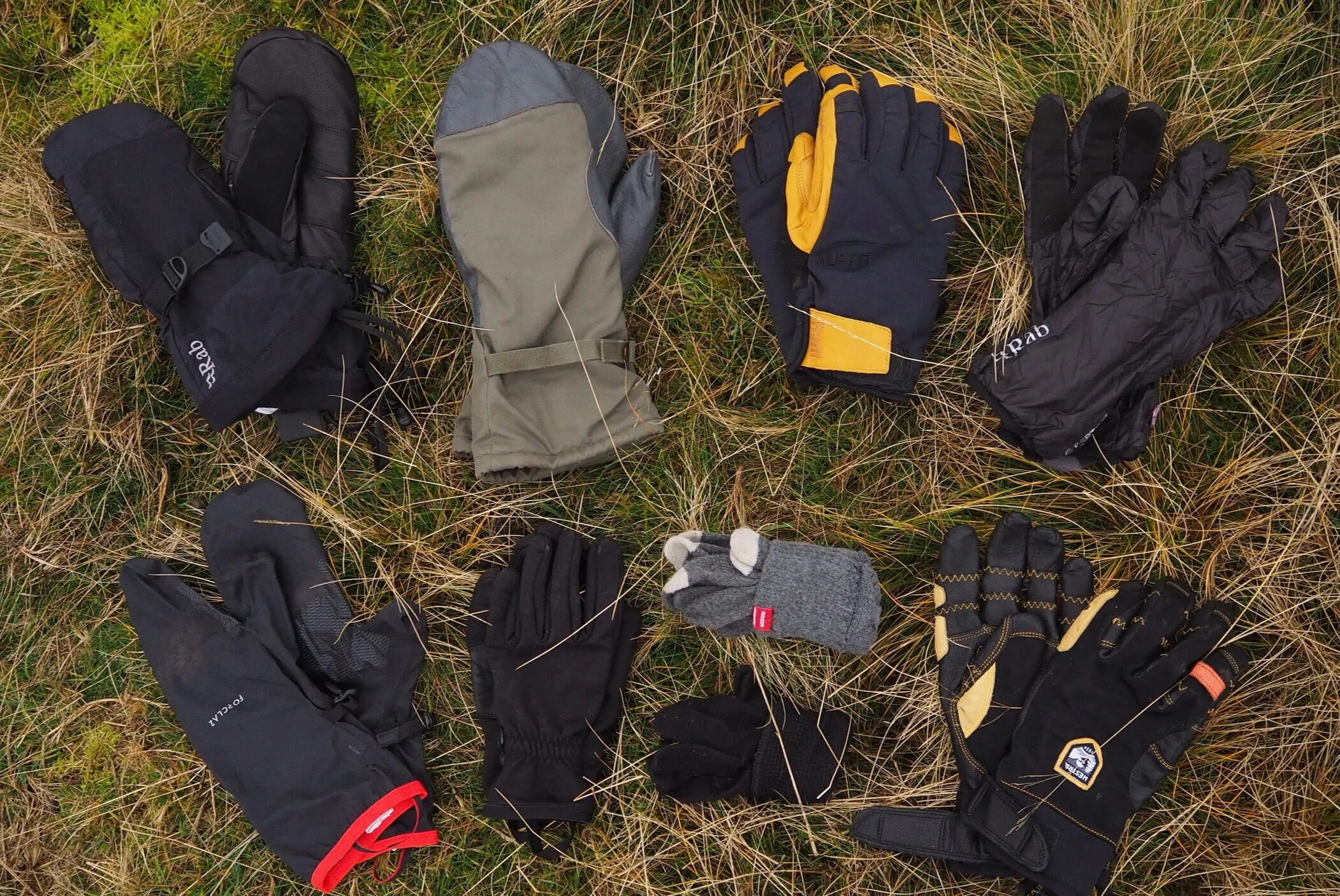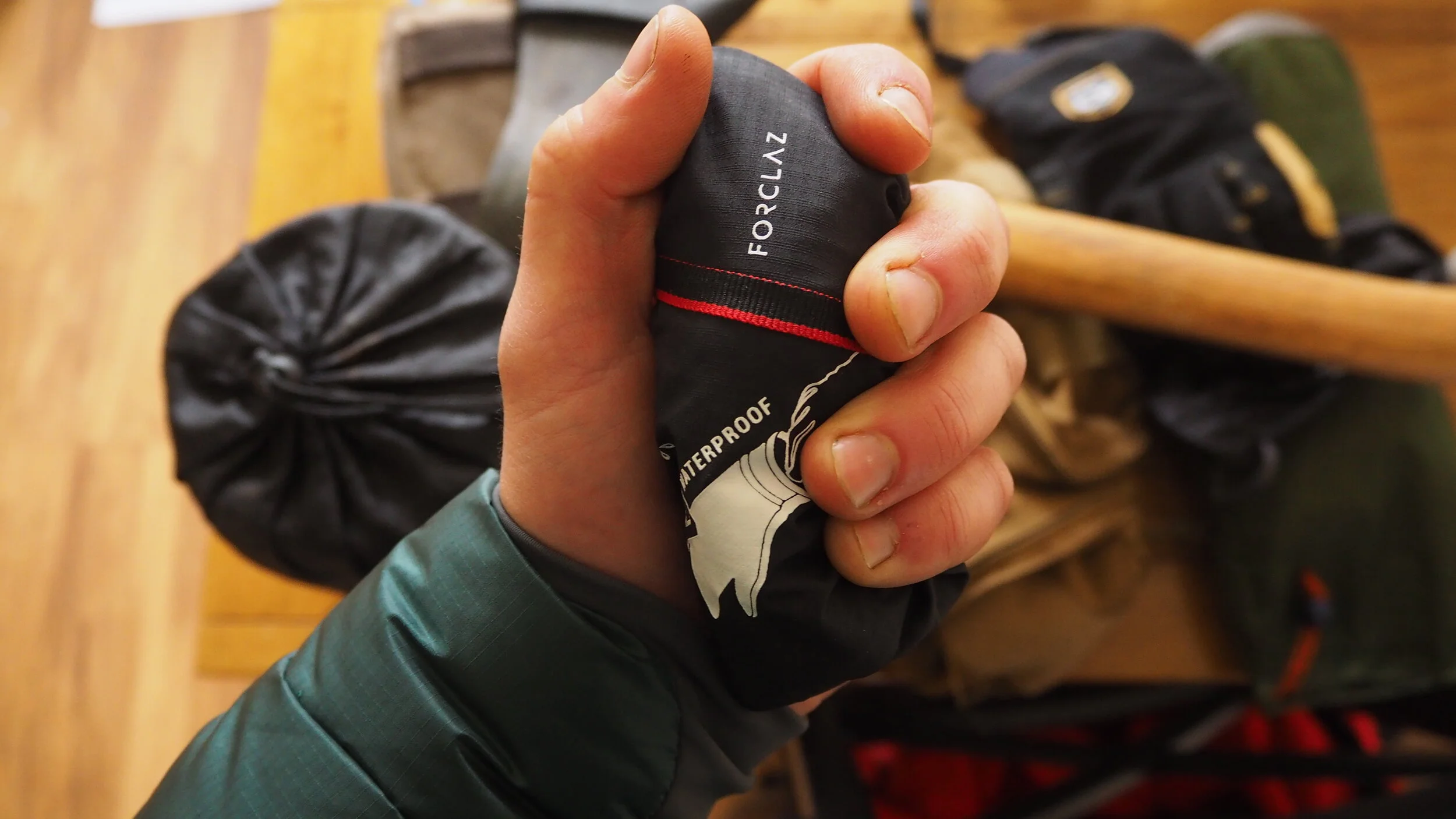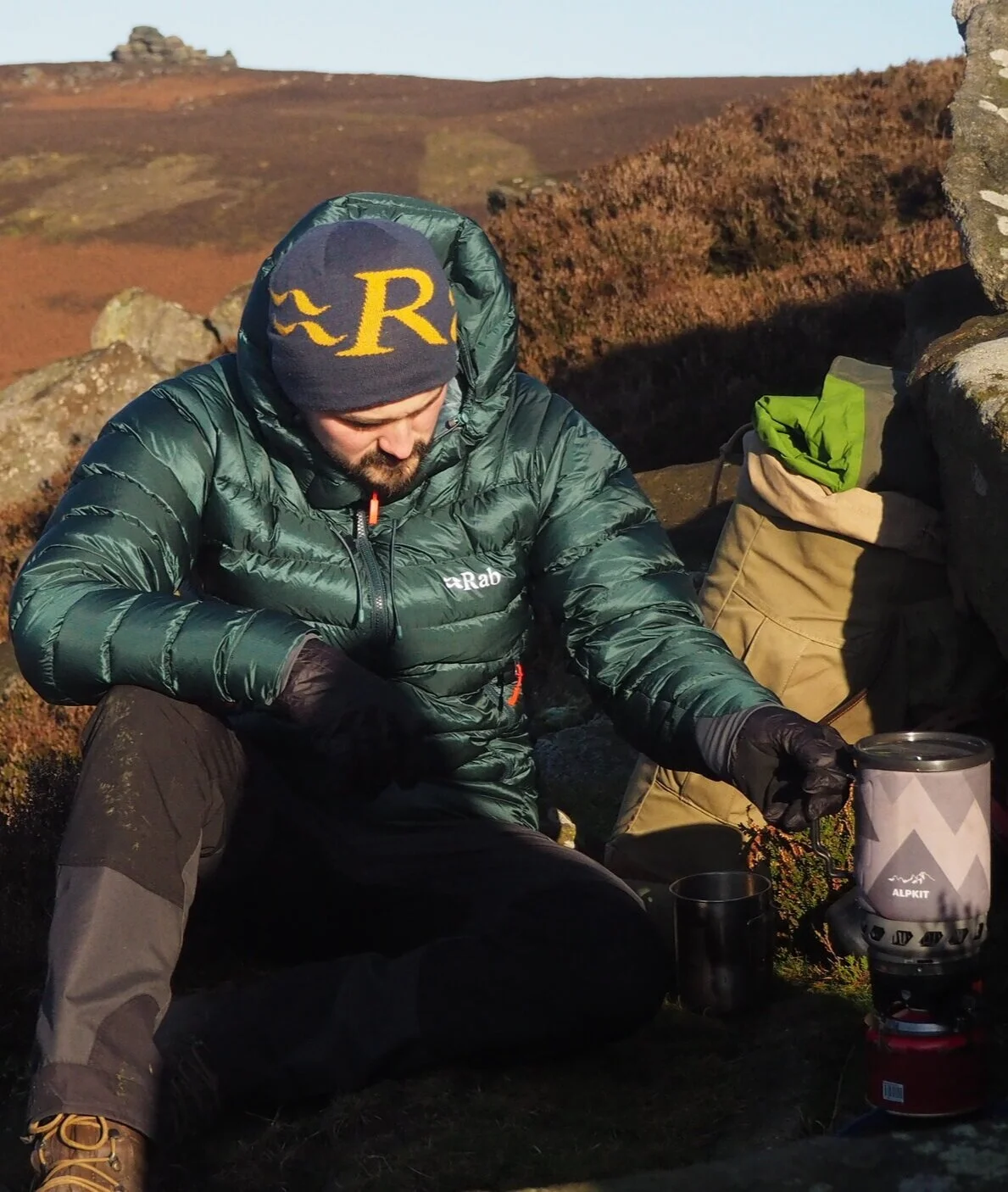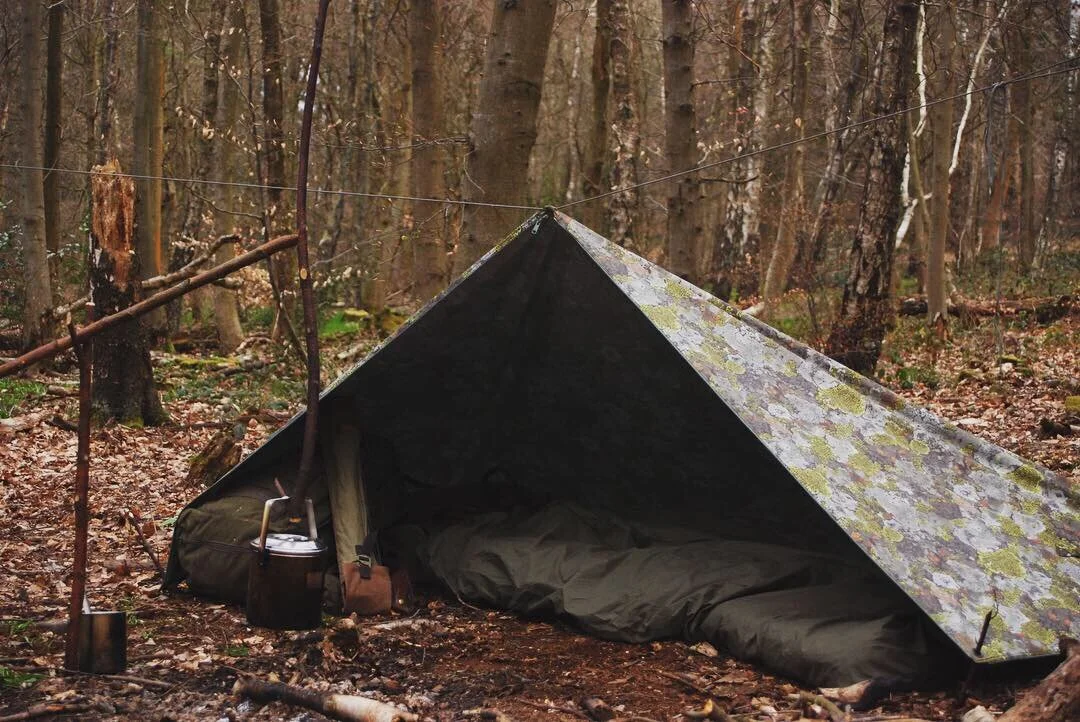What to Carry in Your Daypack - Winter Edition
Jamie Dakota
The long winter nights are bookending blustery days, sunlight is in short supply, and freezing precipitation is a regular concern. It’s the colder season, you’re only spurred on by the prospect of sub-zero adventures…but what should you add into your usual Daypack when considering a Winter day hike?
To build on my previous article, here are some of the items I use to augment my standard kit for a day hike to allow me to operate in the winter woods and hills with a good degree of security. I’ll note here that living in the UK we typically get wet-cold conditions in the lowlands for the most part, with true dry-cold extremes when entering the mountains. The kit below is what I use in the lowlands and forests upto the hills and moors, for true winter mountaineering I would highly recommend getting some training beforehand where specialist gear such as ice-axes are needed.
Rucksack Contents
Roll mat
Emergency Bivi
Waterproof Jacket
Durable waterproof trousers
Light warm layer
Belay Jacket
Tarp
Flask
Water bottle and Metal Mug
Stove
Good quality Head Torch
Map
Compass
Sunscreen
Folding Saw
Waterproof Warm Mitts
Warm Hat, Gloves, Merino Buff, Spare Gloves and Spare Bandana
Voyageur Bandana
Belt Pouch: Containing spare batteries, fire-lighting gear, cordage, cuts-kit, folding knife, back-up torch.
First Aid Kit
Toilet Kit
Field Dressing
Rucksack
Let’s start with the pack itself. I opt for a larger rucksack during the colder months to allow for the extra bulk of clothing and other items which I wouldn’t carry at other times of the year. Something around the 45-55ltr mark is ideal as it gives you plenty of room without being oversized. I prefer simple pack designs, a single main compartment for all my gear which I stow inside an oversize dry-bag.
Clothing
Your first line of protection from exposure to the potentially challenging environment is your clothing. I could write several articles on improvised shelters, and the skill to build them is of immense value, but if your clothing is well thought out and reliable then you may never need build a shelter in the first place. I’ll be producing a blog post in future focusing on what I wear when out at this time of year, so in this post I want to focus more on what items I have in the pack to wear when needed.
Down Electron Jacket and Synthetic Belay Jackets pack sized compared with 1ltr bottle
Warm Layers: In winter I adopt an extra layer of clothing into my pack for when I’m stopped for a rest or if conditions really turn. This warm layer is usually a lightweight and highly compressible jacket as I intent for it to be in the pack 90% of the time, but it also has to be reliable and warm for when it’s really needed. You larger have two choices, synthetic or down. Synthetic for me is the Keela Belay Jacket, which is very warm and tough, and packs down quite small. It’s also very resilient to the rain so if I consider the weather to likely be cold and wet, I’ll take this. Down is lighter, more packable, and warmer too; but it doesn’t handle being wet very well. So if I reckon the weather is going to stay below 0 or I’m climbing up to above the freezing level I’ll gladly reach for my Rab Electron.
I’ll also have a light fleece layer in the pack to wear if I need, either a cheap fleece or a thin duvet jacket (I have a Dare2be jacket which is a blend of synthetic and wool which I love).
Waterproof Shell: At all times of year I carry a waterproof jacket. If i’m in the forest all day often that’ll be a ventile option as it handles the rough tough life of the woods well, with brambles and fires being a hazard to synthetic clothing. If I’m out for more of a hike then a lightweight modern jacket which packs down small yet throws off the worst rain is usually what I opt for, at the moment that’s the excellent Rab Ladakh. Waterproof trousers I never wear in the woods; between the brambles and the fact that rain falls almost always vertically in the woods I find it better to just get a bit damp in some tough Fjallravens. Again though heading out onto the moors or hills where you can be exposed to rain from any angle then a solid pair of tough waterproof over trousers are a brilliant option. Your shell layers are also windproof, which is often overlooked but considering convective heat loss is the major contributor to hypothermia it is highly valuable on windy exposed days to pop the shell layers on even if it’s not raining.
From top left: Waterproof insulated mitts, Army surplus mitts, Thick fleece lined gloves, Lightweight insulated gloves, Waterproof shell mitts, soft shell mitts, Wool gloves, Leather belay gloves.
Gloves: I adopt wherever possible a modular approach to gloves, being able to layer up or down just like jackets, to fit what I’m doing. In general I don’t like leather gloves for the UK, as in the words of Lars Falt “where butter melts, leather melts”. Specifically, leather gets wet and stays wet offering very little thermal protection, although it has good wind-proofing. The Hestra gloves above are use almost exclusively for climbing on rock, covering terrain where I need to protect my hands specifically from abrasion. I like this particular model as they are also water resistant so they’re somewhat more resilient if I’m climbing in the rain. So, when I’m done climbing if it’s raining these go back in my pack and I crack out another pair.
Thin wool gloves are generally cheap, pack small, and are warm even if damp. They’re ok on their own but really benefit from an outer shell to cut out the wind. For this I love a waterproof shell mitt as pictured, which go on easy and pulls off in a second should I need to use my fingers for something. They also pack down to nothing.
The wool liners also fit well inside my softshell gloves for added warmth and weatherproofing. Softshell gloves are fantastic when wet, I use this for canoeing in poor weather mostly as they’re also durable and grippy on the paddle. I’ve yet to find a truly waterproof glove (I’ve tried!) which stay dry and warm. I opt for the softshells as they keep my hands relatively warm when wet as I’m working hard, then I ditch them for mitts when I stop for breaks.
When the weather gets colder, insulated gloves and mitts really are worth the extra bit of bulk in the rucksack. So where I might take any of above at all times of year, the following are colder weather options for sure.
The Rab Zenon gloves saved my hands from the biting rain filled winds on a recent Cairngorms trip, their light and warm enough when wet as they cut out the wind. The insulation also dries very quick; whereas the other option, my Alpkit Frazil’s, are excellent in the snow or dry cold but take ages to dry when wet. A better option would be to use the wool liners with the Hestra’s if I need tough dexterity.
A typical combination of accessories.
Mitts: Gloves are cool, Mitts are sexy. I have three types of winter mitt, and I use them all. I’ve mentioned the waterproof shell mitts already, really excellent at protecting gloves while hiking in driving rain. The Army surplus gloves are pile lined, super tough, and cheap. They are great to dive my hands into, and are big enough that I can wear quite thick gloves and still pull them over the top. They are however not at all waterproof, and get heavy when wet. I use these most in the woods as I don’t mind ragging them around on firewood, brambles and undergrowth. The Rab Blizzard mitts, which we were given for our Longest Line Trek, were actually too warm for most of that trip. They’re completely waterproof and windproof, these are my ultimate defence against poor weather as they’re brilliantly warm and protective, and the pre-shaped grip and finger dividers inside means you retain a good deal of dexterity. I sized mine to be snug fitting as I wanted that dexterity, but upsizing would allow you to wear a thick liner glove if you wanted.
With all hand insulation, trapping air and blocking wind is the key to warm hands. If your gloves are too tight they’ll cut off circulation and keep you cold. Take the time to try on lots of pairs and find out which gloves fit you well.
Hats: Very important when out in the cold. If you’ve wrapped up the rest of your body well, but left your head exposed it’s like leaving a window open in the car when driving: It doesn’t matter how high you have the heaters, the cold will blow through. Having a cold head can also impair your ability to think clearly, so I always take a hat when I’m out. In winter I have a couple of options. A thinner fleece hat for when I’m active, and a thick wool hat for when I’m stopped or if the weather is really cold. I use a merino/possum fur blended hat for the latter, of which I have two. The brown one I hot-washed to shrink it, it’s now almost like felt in that it’s highly wind resistant and damn near waterproof, the grey one is as it came retaining much more warmth than my shrunk one.
Neck warmers: Synthetic ones smell very quickly when you’re hiking but do dry quickly. Merino wool Buffs are excellent and I tend to carry two light ones to give me greater options for layering, and they dry quicker than the thick wool ones. Our own Voyager Bandana is a multi-use item which I could write a whole blog on, safe to say I always carry two bandanas. See the other dapack article for more details.
Stove/ Flask: In winter being able to have a hot drink, whether that’s at lunch or because you’ve gotten caught out in changing conditions and need a warm up, is important. It also make a huge boost to morale if you’re trekking through wet and cold weather. I’ve got both here as I’d planned to also cook my lunch on the stove, but typically I’d have either a flask or a stove. Another option given that my Klean Kanteen flask is about the size of my water bottle would be leave the water bottle at home and simply carry the flask in its place. You may also consider a water filter to top up your water en route if you’re leaving the water bottle at home.
Bivi bag/ jerven bag: I always carry an orange survival bivi as part of my first aid provision. I may also consider carrying a lightweight breathable bivi-bag such as the Snugpak special forces bag or a Jerven Bag if I feel there’s an increased chance I’ll be caught out overnight.
Torches: Not only are the winter days colder, but they’re also shorter. Often overlooked when people are preparing for a winter walk is that by 5pm it can be very dark indeed, and walks which in summer can stretch into the evening are now perilous without a light. I carry a head-torch year round, but in winter I make sure I’m packing my most reliable one which is fully charged and designed for hard use. In summer I like a little Olight HR1 nova as a very small yet trust-worthy torch and I’m unlikely to use it much. In winter my HR1 comes anyway as it’s tiny, but I bring a Black Diamond head torch as a default. I carry spare batteries for both, or carry a battery pack as both are rechargeable.
That’s my suggestions for winter additions to the day pack, to supplement what I carry year round.
If you’re reading this with an intention of getting outside more and living more adventurously you might find our Wayfinder courses useful…
Thank you for reading, I hope you found something useful there. If you have any questions do feel free to ask in the comments below.
All the best
JD


